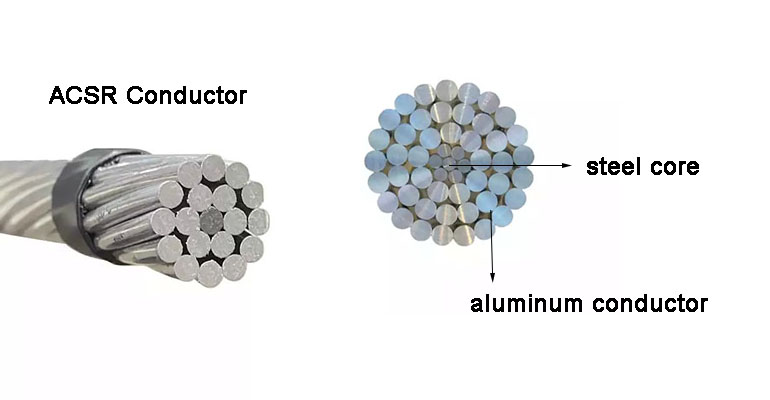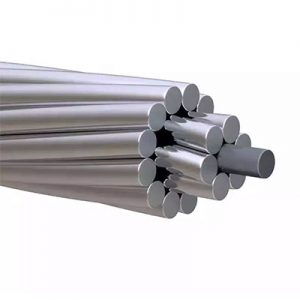- Offices Time:24 Hours Online
- Email:[email protected]
- WhatsApp:+8618339938759

Posted on December 14, 2022
What are the common problems of ACSR conductor?
With the rapid development of the cable manufacturing process, the ACSR conductor technology is also maturing. ACSR conductor has high strength and good conductivity. It has been widely used at home and abroad at this stage, and has been widely praised by the industry. During the use of ACSR conductor, there are often surface oil stains, scratches, loose blackening, etc. In the previous article, we talked about why ACSR is used for high-voltage power transmission. Today, we will further discuss how to control the quality of ACSR conductor.
Frequently asked questions about ACSR conductors
1.The surface is wrong
In daily use, the surface of ACSR conductor is often covered with oil, which brings a lot of trouble to users and affects the use effect. The main reason is that oil and grease drip onto the surface of the wire rod, and its own viscosity is relatively high, and it does not volatilize at room temperature, so they remain on the surface of the wire rod, and the oil removal on the surface of the wire rod before construction is not in place, which also leads to grease residue. In addition to these two relatively influential factors, during the production process of ACSR conductor, residues and other oil stains on mechanical equipment may also cause this phenomenon. Therefore, in the production process, the degreasing step must be done well. At the same time, it is also necessary to ensure that the ACSR conductor is not contaminated with too much grease during the stranding process, to ensure that the stranding process is clean and free of dirt, and to further reduce the appearance of the ACSR conductor surface. Possibility of oil contamination.
2.Scratches on the surface of the wire
Scratches on the surface of wires are one of the main causes of ACSR conductor corona, and corona is one of the biggest causes of power loss. Therefore, effective control of scratches on the surface of wires can reduce power loss. So what are the reasons for scratches on the surface of the wire?
There are many reasons for the scratches on the surface of the wire rod, including deformation of the aluminum rod drawing die due to moisture, and the lubricant cannot fully enter the working area during the drawing process, resulting in scratches on the surface of the stranded wire caused by aluminum scraps in the working area. Another important reason is the quality of the drawing oil. Due to the high temperature for a long time, the drawing oil enters the working area from the lubrication area. If it does not meet the standard, it will seriously affect the lubrication effect and cause scratches on the drawing surface. Therefore, in order to further improve the quality of the wire rod, reduce the Surface scratches, further saving resources, should strictly control the production process of the wire, and fundamentally prevent the appearance of scratches. The drawing oil should also be strictly controlled to ensure the smooth drawing work and improve the quality of the wire.

3.Loose wires
Insidious looseness is a common wire quality accident. In addition to wire defense equipment and technology, the main reason for loose leads is loose twisted wires. This phenomenon will cause serious damage and even waste wires.
4.Conductor blackened
In hot and humid environments, ACSR conductors often turn black, which is mainly due to the chemical elements of ACSR conductors – the surface of aluminum is easily oxidized in the external environment to produce dense oxides. The physical properties of these aluminum compounds Blackening, so the blackening of the surface of the wire we see is largely caused by the oxidation of aluminum, so what are the chemical factors of aluminum oxidation?
Mainly because of the atmosphere. The air is rich in oxygen and a little sulfur. Aluminum is a very active metal. If pure aluminum is exposed to air for a long time, its surface will oxidize. Due to the continuous development of industry, the air pollution is becoming more and more serious, and the serious corrosive sulfides, nitrides, carbides, etc. in the industrial waste gas are becoming more and more serious corrosive gases, which lead to chemical reactions on the surface of the wire rod. As a result, the surface of the wire is blackened.
Post categories
Most Popular Posts
-
The 136th Canton Fair welcomes you to participate!
October 12, 2024 -
High temperature cable introduction
July 26, 2024 -
Kenya Power and Energy Exhibition 2024
June 11, 2024 -
Introduction of rubber sheathed cable
June 5, 2024





